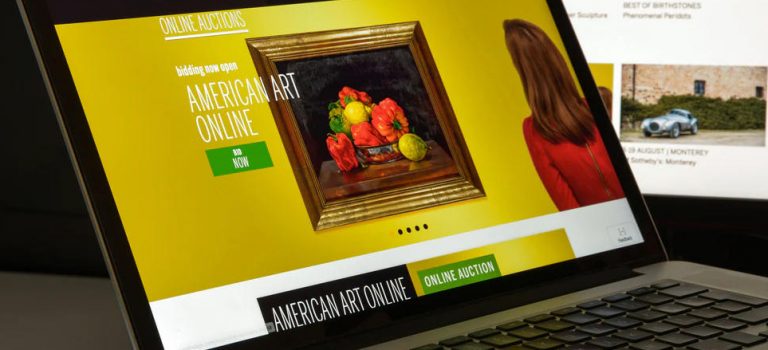Source: The Art Dome.
In the age of digital transformation, technology has proved to be an influential force that is indeed propelling the evolution of art. Tap into the refreshing world of digital art and discover how online resources can enhance your art collection.
Today’s globalized art market has empowered new dynamics, and the convergence of art and technology has birthed a new era where traditional boundaries are being transcended. Online markets are significantly increasing in number and popularity, giving rise to an unprecedented surge in the creation and consumption of digital art.
This steering shift has not only transformed how fine art is promoted and commercialized, but has also opened up new avenues for art enthusiasts and collectors to discover physical and digital works of art that resonate with them at deep levels.
While art galleries and fairs are still great venues that can boost local economy and tourism, online catalogs and purchasing platforms are turning out to be incredibly beneficial for both artists and art lovers, as they enable the international commercialization of physical and digital art pieces. In this article, we will explore how technology is drawing artists and collectors from all over the world closer.
The Digital Canvas: Revolutionizing Promotion and Commercialization
One of the most profound effects from the advent of technology onto the art world is the enhanced synergy between industry players and online resources in pursuit of the promotion, commercialization and international recognition of art pieces. No longer confined to the physical walls of galleries, artworks can now transcend geographical limitations and be showcased to a global audience with just a few clicks.
Social media platforms have emerged as powerful tools for artists to exhibit their work, enabling them to reach a diverse and extensive audience without the need for intermediaries. Moreover, visual-centric platforms such as Instagram, Pinterest, and TikTok have become virtual galleries where artists can not only display their creations but also engage directly with their audience.
The more interaction artists have with their followers, the more exposure they get. Live chats, streaming videos, polls, posts or comments are just some of the ways in which an artist can engage with their fans and carry out diverse initiatives, like promoting a new release, sharing their inspirations, or providing insights into their creative processes.
This democratization of visibility, where artists can build a personal brand and establish a global following through their online presence, has paved the way for emerging talents to find their niche, cultivating a more inclusive and diverse art landscape.

From Auction Houses to AR Experiences: The New Digital Art Sphere
The blast of digital art has not only transformed how traditional artworks are promoted and sold, but has also given birth to an entirely new category of collectibles, while digital advancements in other areas slowly but surely integrate into the art market.
Such is the case with Blockchain, a cutting-edge database technology that enables the legitimate verification of commercial operations. The advent of blockchain technology has revolutionized provenance tracking and ownership authentication, addressing historical challenges of the art world like counterfeiting and fraudulent transactions.
Furthermore, the fusion of art and technology has unleashed a wave of innovation that blurs the line between reality and imagination. Augmented reality (AR) and virtual reality (VR) technologies are driving art enthusiasts into immersive experiences, allowing them to interact with works of art in unprecedented ways.
Galleries and museums are already embracing these technologies to create interactive exhibitions that enable viewers to explore art paintings from different angles, step into the creative process, and even make virtual modifications to art pieces.

A Paradigm of Possibilities: Collecting in the Digital Age
Online platforms dedicated to art commerce have flourished, positioning themselves as digital marketplaces where collectors can explore an extensive array of art pieces from artists spanning the globe. Some platforms showcase works of art from galleries, others specialize in virtual auctions, and others such as The Art Dome offer both gallery artworks and auctioned art pieces.
This shift into virtual dynamics not only helps to streamline buying processes, but also prompts an environment of genuineness and transparency, where artists can build trust by connecting with potential buyers directly.
The digital scope really offers a playground for seasoned and new collectors, inviting them to explore artworks that redefine the boundaries of creativity. Digital art, with its malleable and dynamic nature, challenges conventional notions of ownership, as it allows to engage not just with a static art piece, but rather with an ever-evolving creation, a paradigm shift that is redefining the very essence of art collection.
Without a doubt, technology has ignited a transformation at the core of art collecting. The rise of digital art and the integration of technologies like blockchain, AR & VR have and continue to reshape the contours of the art landscape, as we learn how to navigate it towards uncharted horizons.








